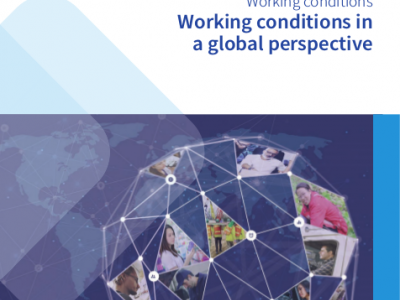To be a more agile and equitable organization, embrace The Skills-Based Movement
To be a more agile and equitable organization, embrace The Skills-Based Movement

A recurring question I often hear from other business leaders is “How can I tap into a bigger pool of engaged and well-skilled people to empower my organization?” This is a challenge all organizations face in today’s tight labor market, which continues to experience prolonged talent scarcity. But by approaching the problem in a novel way, employers can sustain a workforce that is both agile in the short-term and future proof. Furthermore, this model also creates more job opportunities, promotes equity and accelerates the development of their people.
What is this magical solution? Recently, more employers have been moving toward a skills-based model for hiring and redeploying workers. The trend began with some large companies dropping college degrees as a hiring requirement. It continues today as employers consider better ways for determining people’s potential to learn, adapt and advance. By looking beyond degrees, work experiences and professional connections, organizations are unlocking a huge pool of overlooked talent.
Here’s why focusing on skills works is a solution fit for the times: Historical hiring practices based solely on academic degrees and specific work experience don’t always predict future performance and potential for growth nor do they put the right people in the right roles. According to the World Economic Forum, nearly half (46%) of workers believe their formal qualifications are not relevant to their job, yet only 6% of global businesses believe that removing degree requirements would improve talent availability in their organization. A skills-based approach can narrow the gap.
This philosophy prioritizes a worker’s abilities, aspirations and motivation to succeed. In conjunction with an effective learning and development strategy, the skills-based process reimagines how work gets done, allowing companies to better fill jobs. Along the way, people are supported with a skilling curriculum tailored to their needs. The result is greater business agility, a more efficient use of resources and a more satisfied workforce.
This is also a more equitable way to hire and promote because it levels the playing field for workers lacking formal credentials but may have developed the right skills through informal learning, those possessing strong inherent abilities such as critical thinking, and people with exceptional learning abilities. For a considerable part of the global workforce, a skills-based model is a great way to get their foot in the door.
3 Practical Considerations For Success
There are hurdles associated with a skills-based approach, so how can employers succeed in their efforts? To be more effective, companies should adopt a pragmatic approach guided by clear goals and metrics. Here’s how to do this.
- Clarify your purpose. A skills-based approach can solve a number of workforce challenges — talent scarcity, equity and even engagement. To successfully shift to this model, prioritize the most pressing needs and clarify purpose and goals. This is an important step toward aligning everyone in the organization and changing mindsets about jobs and skills. Academic credentials and past job experiences may still play an important part in choosing candidates, but a person’s potential and ambition should also be taken into account. Doing so will help companies gain greater access to skills and benefit from having the right people in jobs.
- Adopt a practical mindset. Making big changes like these can be overwhelming. It’s important not to inundate employees with many changes at once; they are key to successful adoption. Take measured steps that help with rethinking around people’s inherent and learned skills and their potential to grow. Consider the skills-based movement as a rolling snowball that starts small but has the capacity to grow exponentially with momentum.
- Build competencies with targeted L&D. Skills are becoming obsolete more quickly during this period of AI and digital proliferation, so employers must develop an effective upskilling and reskilling strategy. Keeping people current with technology and work is a basic tenet of the skills-based revolution. These efforts not only future-proof the business but also keep talent happy and engaged. According to Randstad’s 2024 Workmonitor research, nearly three-quarters (72%) consider their training and development an important mandate for their current and future jobs, and over a third (36%) would turn down a job if it didn’t offer development opportunities.
The world of work is changing. In recent years we’ve witnessed the acceleration of many trends such as remote work, gig employment and the growing skills gap. The employers that have stayed ahead of competitors are those who have figured out how to develop, motivate and reward their people. By embracing a skills-based mindset to further their efforts, leading organizations ensure their people are prepared and engaged for whatever may come their way.








